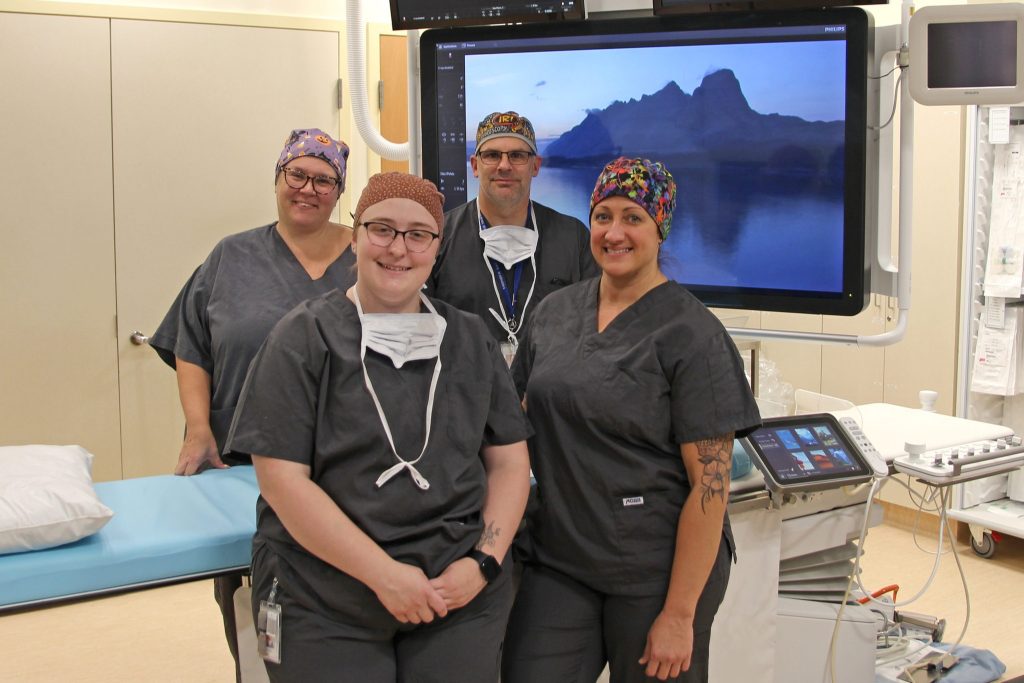Medical Radiation Sciences Week (November 3-9)
by Raiili Pellizzari
 (Back row, L-R): Christi Laatu, Charge of interventional Radiology and MRT(R), and Mike Gasparatto, MRT(R). (Front, row L-R): Kaelyn Mills, MRT(R) and Janine Richards MRT(R).
(Back row, L-R): Christi Laatu, Charge of interventional Radiology and MRT(R), and Mike Gasparatto, MRT(R). (Front, row L-R): Kaelyn Mills, MRT(R) and Janine Richards MRT(R).It’s Medical Radiation Sciences Week (November 3-9) and we’re celebrating Medical Radiation Technologists (MRTs) and Diagnostic Medical Sonographers (DMSs) who play an integral role in patient care.
Medical radiation technologists (MRT) and diagnostic medical sonographers (DMS) perform diagnostic imaging examinations and administer radiation therapy treatments. So, if you have ever had an x-ray, CT scan, MRI, nuclear medicine procedure, ultrasound or radiation therapy, you have been in contact with an MRT or DMS. They can be found in emergency departments, operating rooms, mobile breast screening vans as well as diagnostic imaging departments and clinics.
MRTs and DMSs provide service to both the public and private sectors within the Canadian health care system.
Their key role is in diagnosis and treatment, and they serve as advisors to radiologists, radiation oncologists and other healthcare providers. Because they deal with patients on the front lines, they also serve as patient advocates and educators. Some of them are also health care researchers, technical and therapy specialists, and interdisciplinary consultants. MRTs and DMSs play as part of the health care team — an essential link delivering care through technology.